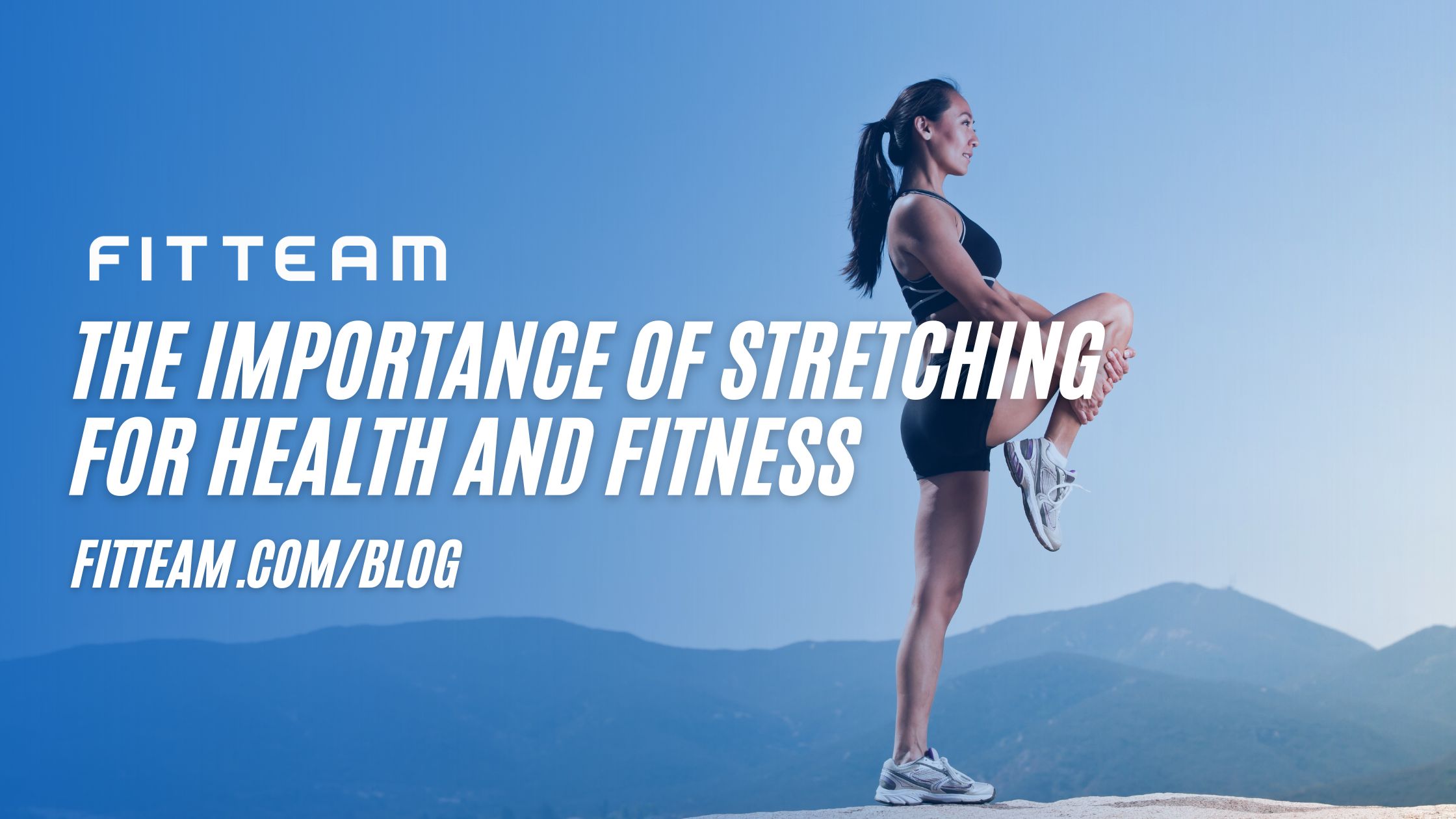
28 Jul The Importance of Stretching for Health and Fitness
The Importance of Stretching for Health and Fitness
Stretching is often an overlooked aspect of fitness, yet its benefits are essential for overall health and performance. Whether you’re an athlete, a weekend warrior, or someone just looking to improve your daily well-being, incorporating regular stretching into your routine can offer numerous advantages. In this blog, we’ll delve into the importance of stretching, backed by scientific research and expert recommendations.
1. Improves Flexibility and Range of Motion
One of the most well-known benefits of stretching is improved flexibility. Flexibility refers to the ability of your joints to move through their full range of motion. According to the American Council on Exercise (ACE), regular stretching helps lengthen muscles, which can prevent stiffness and enhance mobility . Improved flexibility can lead to better performance in physical activities and reduce the risk of injuries.
2. Enhances Posture
Poor posture can lead to a variety of health issues, including back and neck pain. Stretching, particularly when focused on the muscles of the back, shoulders, and chest, can help improve alignment and posture. A study published in the Journal of Physical Therapy Science found that stretching exercises significantly improved posture in participants . By lengthening tight muscles and promoting balance in the body, stretching can help maintain proper posture.
3. Reduces Muscle Tension and Pain
Muscle tension can result from stress, overuse, or prolonged inactivity. Stretching helps to alleviate this tension by increasing blood flow to the muscles and promoting relaxation. The Mayo Clinic recommends stretching as a way to manage pain associated with muscle tension, particularly in the back and neck . Regular stretching can also reduce the frequency and intensity of muscle cramps.
4. Increases Blood Circulation
Stretching enhances blood circulation by allowing more oxygen and nutrients to be delivered to the muscles. This increased blood flow helps in the recovery process and reduces muscle soreness after workouts. A review in the International Journal of Sports Physical Therapy highlighted that stretching can improve circulation and assist in the removal of metabolic waste products from muscles .
5. Boosts Athletic Performance
For athletes, stretching is crucial for optimizing performance. Dynamic stretching, in particular, prepares the muscles for the demands of physical activity by increasing their temperature and flexibility. According to a study in the Journal of Strength and Conditioning Research, athletes who engaged in dynamic stretching before exercise showed improvements in their performance compared to those who did not stretch .
6. Supports Mental Health
Stretching is not only beneficial for physical health but also for mental well-being. Engaging in regular stretching can reduce stress and promote relaxation. Practices like yoga, which incorporate extensive stretching, have been shown to lower levels of the stress hormone cortisol. A study in Frontiers in Psychiatry found that participants who practiced yoga reported significant reductions in stress and anxiety levels .
7. Enhances Recovery
Post-exercise stretching can aid in the recovery process by reducing muscle stiffness and soreness. It helps to elongate muscles that have contracted during exercise, which can prevent post-workout tightness. The American College of Sports Medicine (ACSM) recommends incorporating stretching into your cool-down routine to enhance recovery and maintain muscle elasticity .
Conclusion
Incorporating regular stretching into your fitness routine can offer a wide range of benefits, from improved flexibility and posture to reduced muscle tension and enhanced mental well-being. Whether you’re an athlete aiming to boost performance or someone looking to enhance daily function, stretching is a simple yet powerful tool for improving overall health. Start integrating stretching into your daily regimen and unlock your full potential.
References
- American Council on Exercise (ACE). (2020). The Benefits of Stretching. Retrieved from https://www.acefitness.org
- Journal of Physical Therapy Science. (2016). The Effects of Stretching on Posture. Retrieved from https://www.jstage.jst.go.jp
- Mayo Clinic. (2021). Stretching: Focus on Flexibility. Retrieved from https://www.mayoclinic.org
- International Journal of Sports Physical Therapy. (2012). The Role of Stretching in Exercise Recovery. Retrieved from https://www.ncbi.nlm.nih.gov
- Journal of Strength and Conditioning Research. (2013). Dynamic Stretching and Athletic Performance. Retrieved from https://journals.lww.com
- Frontiers in Psychiatry. (2018). The Impact of Yoga on Stress and Anxiety. Retrieved from https://www.frontiersin.org
- American College of Sports Medicine (ACSM). (2017). Guidelines for Exercise Testing and Prescription. Retrieved from https://www.acsm.org

